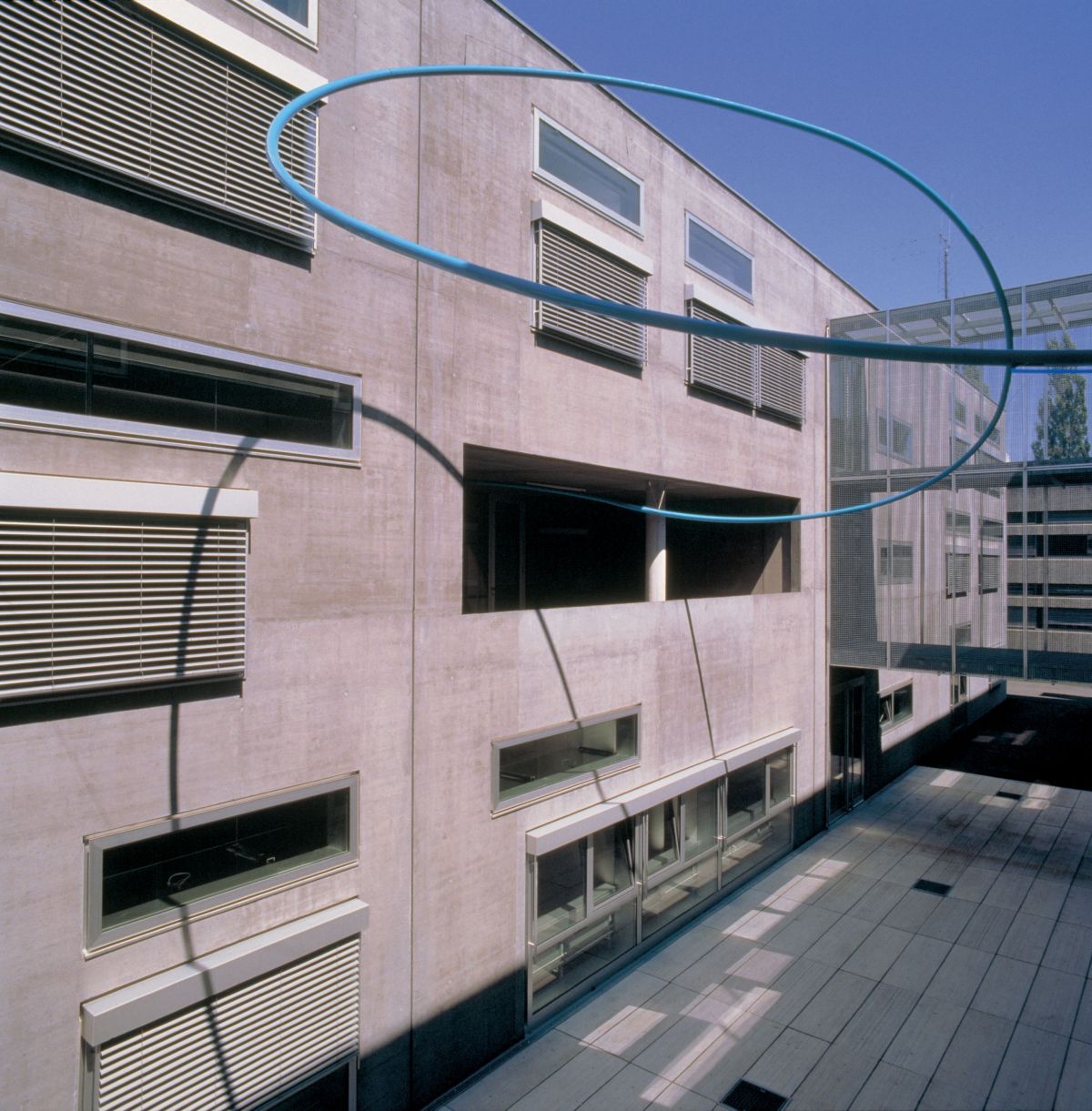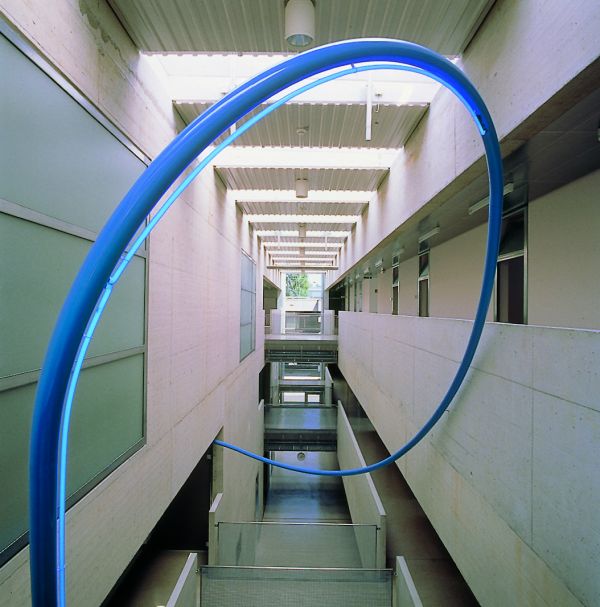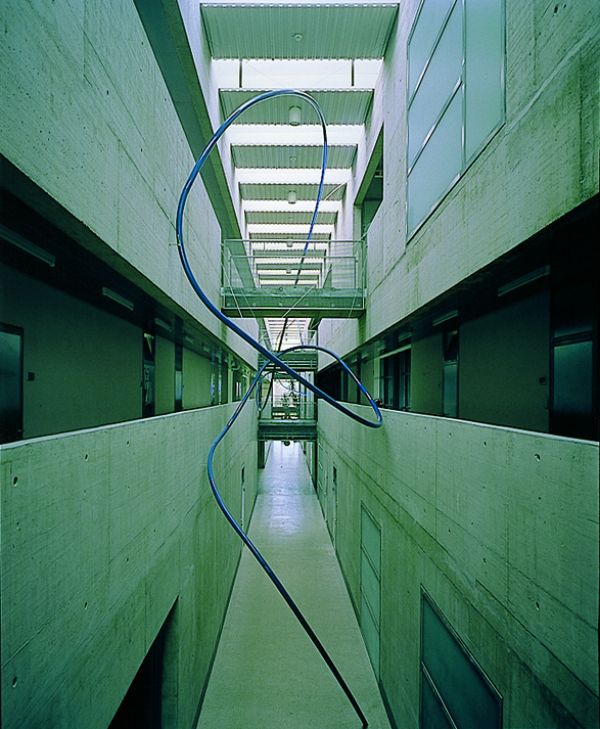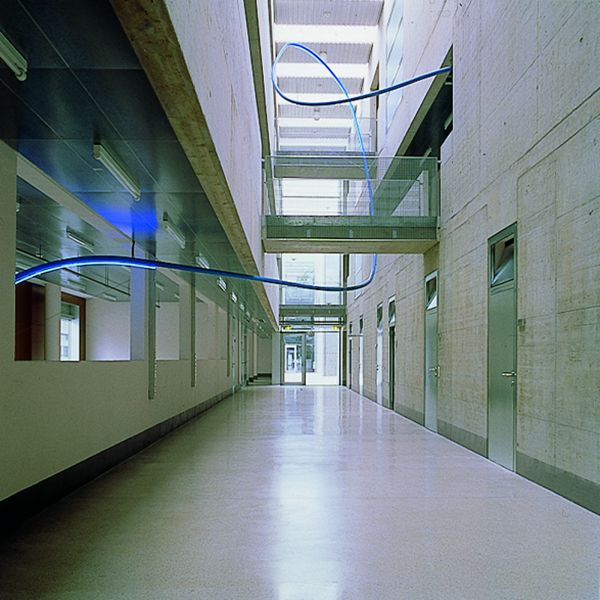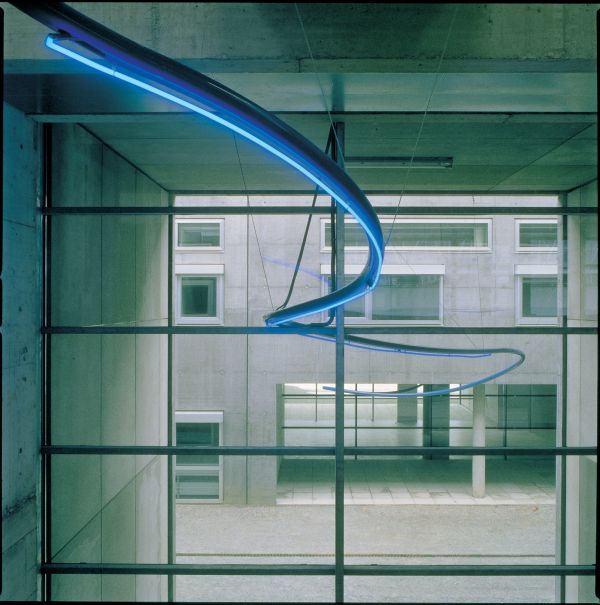Butterfly Orbit & Dragonfly Orbit
1998 — 2000. Graz, Graz, Austria
Hardly ever have I seen such a beautiful insect as the dragonfly. In many ways I have sought for years to transpose the apparently immaterial image of dragonfly into my work.
The thinness, slenderness, transparency and lightness of its body make this insect ostensibly independent from the rest of the world. Therefore it is a great example for my work, both large (as in Graz) and small, playing on paper, elegantly linked just like the Tango Dancers.
The Butterfly Orbit and the Dragonfly Orbit both form the paths of a fluttering dragonfly and flying butterfly in the space of a modern building. Maybe that is what I am personally most fond of. ‘The Butterfly Orbit’ is the winning design in an international competition for an artwork adorning a bleak, concrete building by the architects Riegler and Riewe, part of the Technical University of Graz. Just like many of their other buildings, the tu Graz building is characterized by a rigid orthogonality, in which simple additions create a sequence of spaces and glass separations create openness. Eight concrete buildings, each three stories high, are connected as a whole through a network of glass walkways, streets and squares.
The sculpture consists of a slim steel pipe with a length of 149 m. (ø 70 mm.), which twists and curves through the interior and exterior of the building in 47 turns. Like a fluttering butterfly, it follows its route, and at various points along
the way, the path is lit with neon lights. This again is reflected in the walls and the roof. The uninhibited, playful form of the sculpture is in stark contrast with the sharp edges of the building, complementing each other beautifully. The Dragonfly Orbit (150 m) was placed in a second tu Graz building in April 2000.
The Butterfly Orbit as well as the Dragonfly Orbit were installed by Octatube (engineering, steelworks) and Neon Weka (neon producer).
It turned out to not always be easy, building and dismantling the scaffolding under the architect’s gangways. Naturally, there was a lot of deliberation between Octatube and Neon Weka to exactly fit the slim neon pipes into the specially made cut-outs in the steelworks. With everyone’s hard work and good communication however, it was done well eventually. For the second assignment, the Dragonfly Orbit, I was wise enough to rent a platform. It nevertheless required some sweat and tears from the mechanics. Personally, I thoroughly enjoyed installing the artwork. First, I lived in the same hotel as the mechanics. Later I took up residence in the Palais Hotel Erzherzog Johann, where I had a wonderful room with a piano. What else could one want?
In this sober university building the two lines are totally minimalistic, feminine, present without a name, with neon as an additional emphasis on lighting. I am incredibly happy with it. If this motto “Less is more, more is less” counts anywhere – then this is the place. Well! What did I say? It is ‘a little bit naked, a little bit happy, I love you, you love me’. That is the kind of work it is. It is almost nothing, which oscillates through the building like a butterfly seeking its way in a delicate and fragile but brave way.
Friegels
An identical experience I had with the Friegels on a much smaller scale, but, in my view, very similar. Friegels are peculiar art insects which get entangled with each other and which always appear with many of their kind. They thrive best in the sun, and the wandering shadows change the Friegels’ length and width. The musical entanglement produces the same soft humming sound like from dragonflies in love… but then quietened down in steel wire on paper or on canvas.
